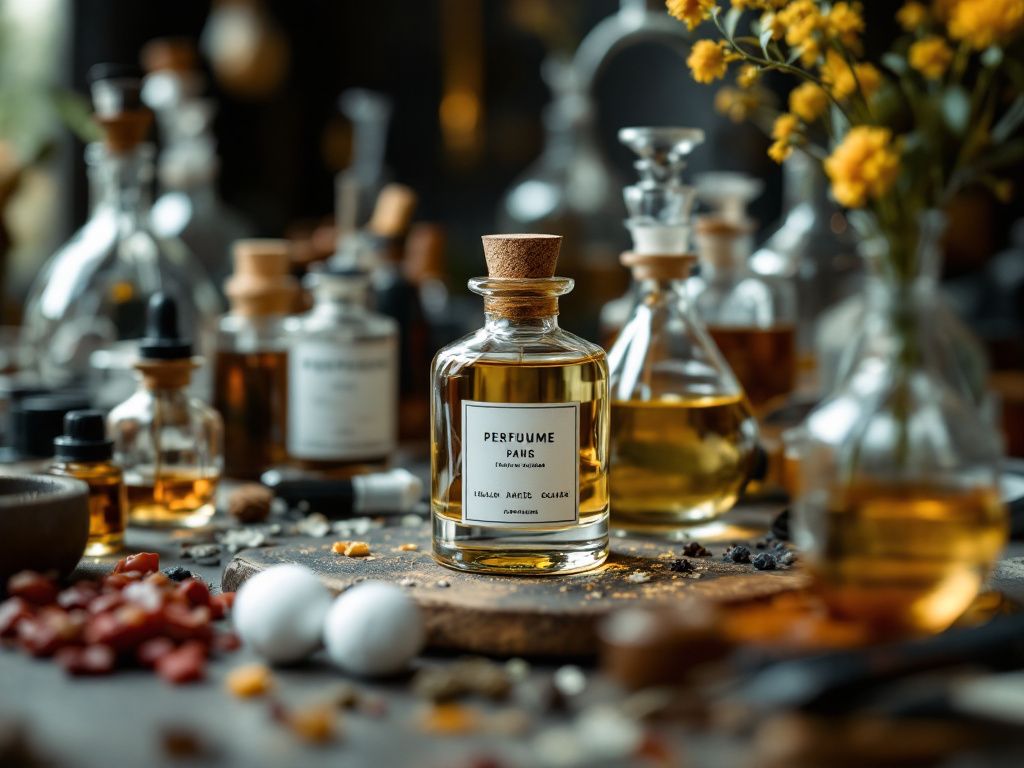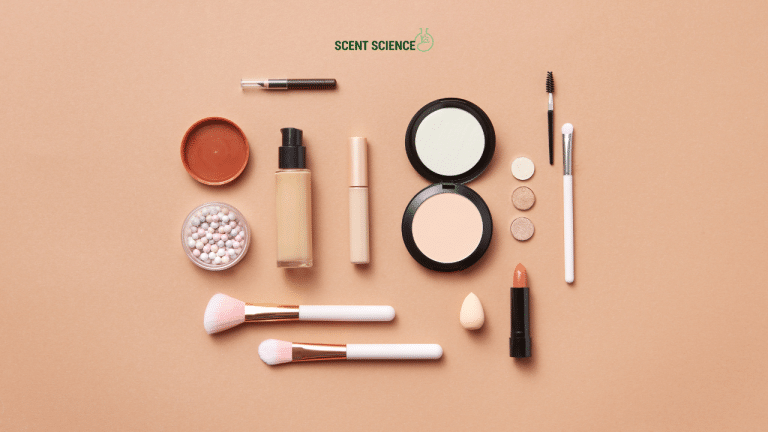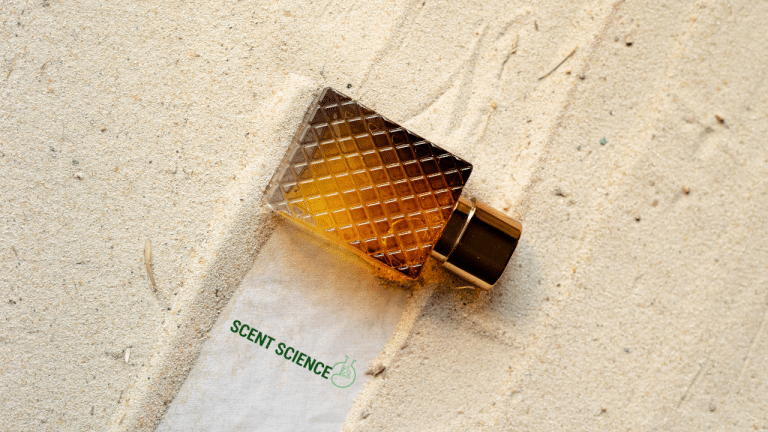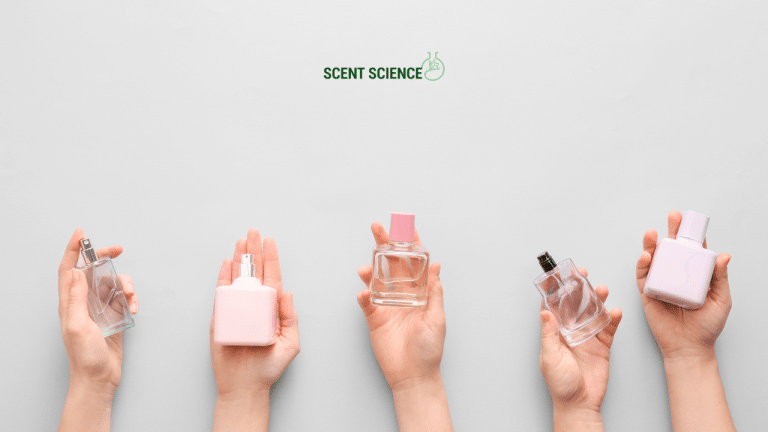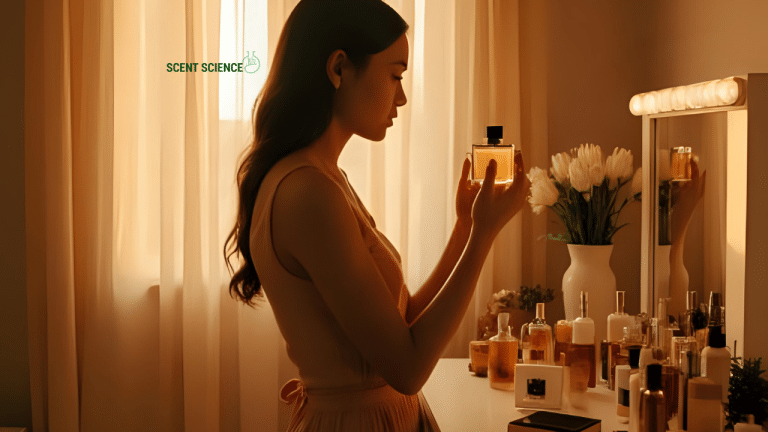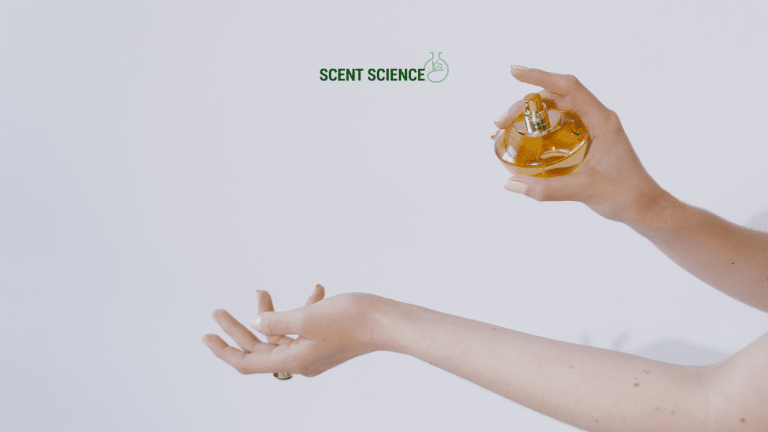You’ve probably found yourself wandering through a perfumery, surrounded by rows of beautiful bottles, each promising a unique aroma. But have you ever stopped to wonder how those delightful scents are created? What magic—or science—goes into crafting that perfect fragrance? Let’s dive into the world of fragrance chemical formulas to unwrap the mystery behind how perfumes are made. **Spoiler alert:** It’s a fascinating blend of art and chemistry that even puzzles the experts sometimes.
Table of Contents
ToggleThe Mystery of Chemistry in Fragrances: How Does It All Work?
Have you ever caught yourself thinking, “Why does this perfume smell like a fresh spring morning or a spiced autumn evening?” Well, each scent you experience is the result of a carefully crafted fragrance chemical formula. It’s essentially a blueprint made up of a cocktail of different ingredients—both natural and synthetic—that work together to create a perfume’s distinct scent. This isn’t just throwing random smells together, either. It’s a precise science where balance is key.
The Basics: Breaking Down the Formula
In technical terms, a fragrance chemical formula is an intricate combination of aromatic ingredients. Picture it like cooking—a bit of this, a dash of that. The chemists here are like master chefs for your nose. Each component in a formula is chosen for its unique properties and how it interacts with other ingredients. Some are designed to stick around, while others – poof! – fade away quickly, leaving just a whisper behind.
Key Components of a Fragrance Chemical Formula
- Acids: They’re used to stabilize and improve the longevity of a scent.
- Aldehydes: Often responsible for the initial sniff or the “top note” that you first sense when applying a fragrance.
- Esters: These give off sweet and fruity notes. Think pear or apple.
- Ketones and Lactones: Work great for imparting creamy or coconut-like aromas.
- Essential Oils: The true superheroes providing natural aromatic elements.
It can be a bit like solving a puzzle where if one piece doesn’t fit, the whole picture looks off. Input the right chemicals, and voilà, you get a perfectly balanced fragrance.
Understanding the Structure: Top, Middle, and Base Notes

Here’s the thing: a fragrance isn’t just a single note. Oh no—it’s a harmonious blend of three layers, each playing its own part over time.
The Top Notes: The Initial Impression
These are the volatile, ephemeral components that hit your nose first. The reality is they’re here for a good time, not a long time. Citrus, ginger, and herbal-scents fall into this quick-evaporating tier. The fragrance chemical formula has to account for these being fast fades.
The Heart Notes: The Body of the Perfume
Picture this: you’ve sprayed your perfume, and after the immediacy of the top notes disappears, the heart notes begin to smile through. Usually more robust, floral, or spicy scents are in play here. The formula here has to support these middle notes for the perfume to have substance—think long-lasting rather than fleeting.
The Base Notes: The Deep, Lingering Finale
Finally, we have the base notes, the seductively strong backdrop that stays with you longest. Woodsy, musky, or earthy scents often linger here, warming and grounding, making them crucial for a well-rounded fragrance. If the foundation isn’t right, even the sleekest skyscraper will topple over—same goes for perfumes.
Common Challenges in Fragrance Formulation
All this sounds straightforward, right? But trust me, formulating a fragrance with just the right balance isn’t a walk in the park. A segment about where things can go haywire might help appreciate the complexity.
Sourcing the Right Ingredients
New chemical compounds for perfumes aren’t created by waving a magic wand. Believe me, it’s more like an adventure. The market varies, natural resources fluctuate, and discovering fresh scents means navigating peaks and valleys of supply and demand.
Balancing Synthetic and Natural Components

Achieving harmony between natural oils and human-made elements without one overpowering the other requires both skill and intuition. A formula that relies too heavily on synthetic components, for example, might turn out flat or lackluster.
Addressing Allergens and Safety Concerns
Safety in fragrance composition can’t be overstated. Many components must pass rigorous testing to ensure allergens are managed and the final product is safe for human use. Ensuring this is as crucial as the creative process itself, as a single miscalculation could turn a bubbly floral fragrance into a sneeze-inducing nightmare.
Practical Steps: Crafting a DIY Fragrance Formula
While creating a mainstream perfume requires professional expertise and resources, experimenting at home with simpler fragrance chemical formulas can be a highly rewarding DIY project. Here’s how you might concoct your own simple blend:
Step 1: Gather Your Ingredients
- Essential Oils: Choose three to five based on the scent notes you want. For instance, lavender for the top, chamomile as a middle, and cedarwood for base.
- Alcohol: Using an unscented alcohol like vodka will help disperse the oils and fares lighter on your skin.
- Distilled Water: For a neatly diluted concoction.
Step 2: Compose Your Formula
- Top Note Oils: Begin with the scents you want to come forward first, about 15-20% of your total.
- Middle Note Oils: Combine next, these will comprise 30-40%.
- Base Note Oils: Last, not least, make up 50-55%.
Don’t forget to be meticulous and patient. Play around with varying drop counts to see how altering portions affects the final balance.
Step 3: The Blending Process

- Mix your chosen oils in a sterile glass bottle.
- Leave the blend to age in a cool, dark spot for 48 hours to a month (yep, perfumes are like fine wine, they improve with age).
- Next, sprinkle in the alcohol to secure everything together, letting it infuse for a good couple of weeks.
- Add some distilled water and give it another shake.
- Repeat filtering and adjusting until you’re happy with the composition.
Step 4: Test and Tweak
This is where the magic happens—or where you loop back to step 2 if things aren’t panning out. Don your scent, evaluate its development over 24 hours, and make adjustments.
Algorithm of Aromas: Chemical Analysis Meets Creativity
Now, you might be wondering, where does contemporary science come in? Enter fragrance chemical analysis—a genius practice allowing scientists to deconstruct a fragrance’s formula for purposes like improving existing blends or mimicking nature. Remember when the industry analyzed endangered plant scents and recreated them synthetically, preserving nature’s legacy? Essentially, it’s chemistry and tech joining forces to keep the aromatic world safe and sound.
How the Analysis Process Works
- Gas Chromatography: Breaks down fragrance components one by one for individual scrutiny.
- Mass Spectrometry: Reveals the molecular weight of the components.
This scientific deep dive is how, even centuries-old smells can be closely replicated today. And considering how some ingredients go extinct, this tech-heavy process is not only innovative but necessary.
Wrapping up the Aromatic Journey
Understanding fragrance chemical formulas brings you face-to-face with both creativity and science. It’s an allure that captures many noses and hearts worldwide because of the way it intertwines technical genius and artistic craftiness. Sure, there are manifold hurdles in the path from concept to creation, but when completed, this dual dance of nature and mechanisms births outstanding fragrances that evoke emotions and memories in ways truly unparalleled.
So, next time you’re spritzing on your favorite blend, remember—there’s a whole symphony of carefully curated scents at play, each note contributing to the magnificent encore that is your coveted scent.
The more familiar you become with the elements at play in a fragrance chemical formula—and maybe dabble in a little DIY dis-coventuring—the better you’ll appreciate what it takes to bring these olfactory expressions to life. Let your curiosity drive you, your creativity guide you, and enjoy the aromatic odyssey!
Frequently Asked Questions
What is a fragrance chemical formula?
A fragrance chemical formula is a detailed list of various fragrance compounds blended in specific measures to achieve the desired aroma. It includes a mix of essential oils, aroma compounds, and synthetic ingredients, each contributing specific characteristics to the scent profile[1][3][5).
What are the different layers or notes in a fragrance chemical formula?
A fragrance typically consists of three layers: Top Notes, Middle (or Heart) Notes, and Base Notes. Top Notes are the initial, light, and ephemeral scents; Middle Notes add depth and warmth; and Base Notes are the rich, lingering scents that last the longest[1][3][5).
What are some common chemical structures found in fragrance chemical formulas?
Common chemical structures include Esters, which contribute to fruity and floral smells; Terpenes, found in essential oils and contributing to a wide array of scents; and Alcohols, which can serve both as solvents and as unique smelling compounds[1][5).
How are fragrance chemical formulas created?
Fragrance chemical formulas are crafted through a meticulous process involving the combination of essential oils, aroma compounds, and synthetic ingredients. Perfumers determine ingredient ratios and evaluate how various elements interact to create a harmonious and lasting scent[1][3][5).
References
